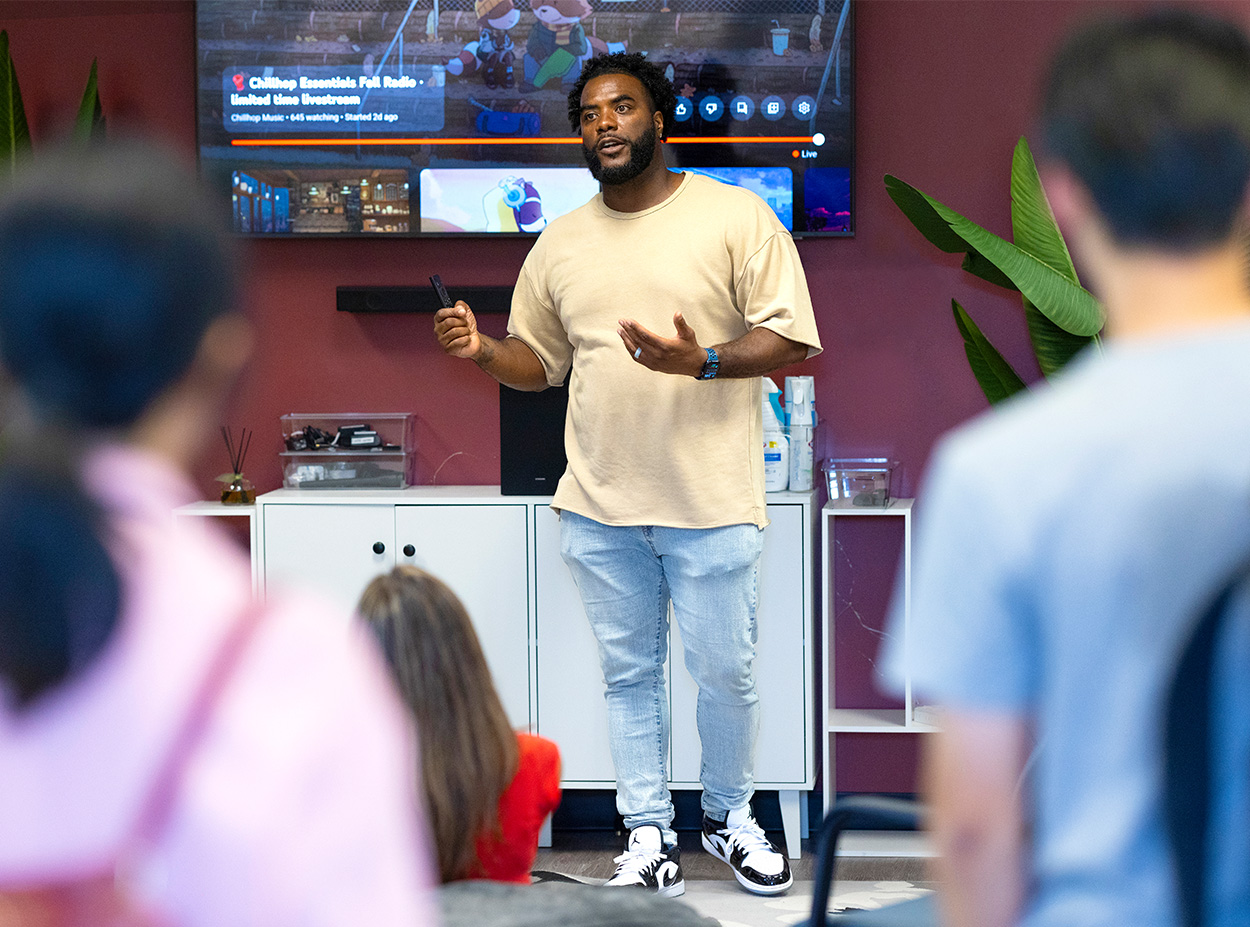On the forefront of viewpoint diversity and freedom of expression, Vince Greer has made it his mission to help CMC students engage in constructive dialogue—whether it’s listening to divergent perspectives at the Athenaeum or introducing responsible leadership principles during New Student Orientation.
Greer, who was named CMC’s Assistant Vice President of Student Affairs for Dialogue and Diversity in 2023, is leading and expanding the College’s efforts to provide a range of opportunities to learn, practice, and reinforce commitments of freedom of expression, viewpoint diversity, and constructive dialogue. His goal is for CMC students to acquire critical skills in difficult conversations while building social connections and community.
You have partnered with campus stakeholders to develop and deliver a four-year comprehensive learning program on constructive dialogue for CMC students. What are some of the core components? Where do you see this practice play out the most on campus?
All incoming students are introduced to the concept of constructive dialogue prior to arriving on campus by taking part in a six-part learning module, Perspectives, created by the Constructive Dialogue Institute (CDI), a nonpartisan organization. The module teaches behavioral science concepts to help learners gain the mindset for constructive dialogue across differences. It also focuses on constructive dialogue skill-building. Students are introduced to the CDI’s five principles of constructive dialogue: let go of winning; get curious; share stories; navigate conflict with purpose; and find what’s shared.
These principles are introduced, practiced, and reinforced throughout their orientation to CMC—including on WOA trips or during class dinners. We place a significant focus on the first year for skill development because the most norm setting occurs here. Furthermore, this heavy emphasis in year one lays a foundation for ongoing work over our student’s remaining years.
Our goal is to have CMC students continually practice and refine these skills, whether formally or informally across campus—such as in the classroom, in organization and club meetings, or at the Ath, a CARE Center event, or an Open Academy salon. We want students to see that there are so many places and opportunities to engage in constructive dialogue on campus.

